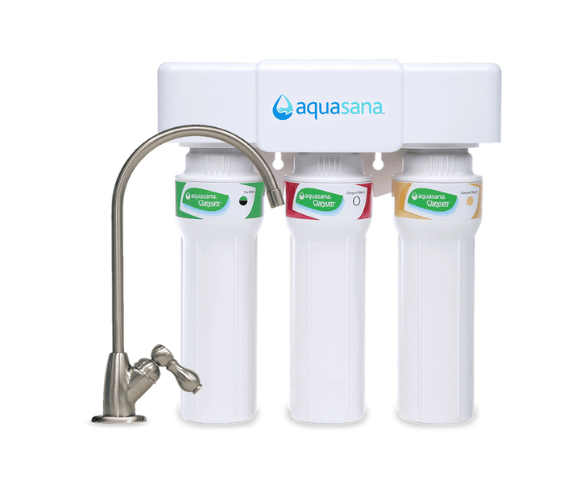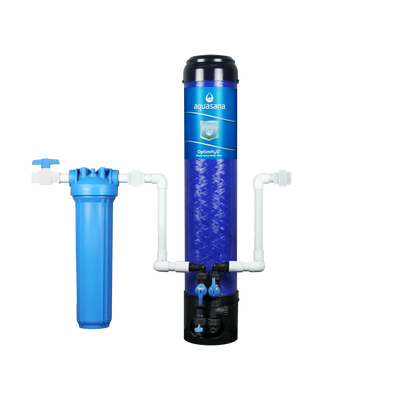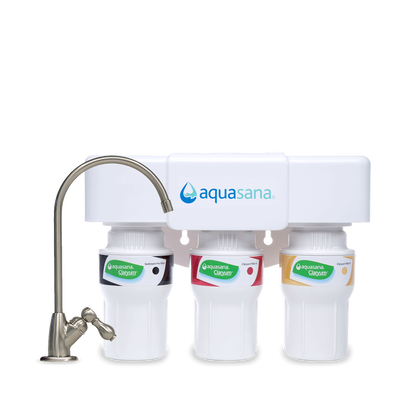What are PFAS?
PFAS, or per- and polyfluoroalkyl substances, are a large group of man-made chemicals used in a variety of industrial and consumer products since the 1940s. Known for their resistance to heat, water, and oil, PFAS have been commonly found in nonstick cookware, stain-resistant fabrics, and food packaging. Because PFAS have strong carbon-fluorine bonds, they break down very slowly in the environment and have been nicknamed “forever chemicals.” As a result, PFAS can accumulate over time in the environment and in the human body.
Health risks of PFAS exposure
Exposure to PFAS has been linked to a range of potential health risks, including:
- Developmental effects in children
- Reduced immune response
- Hormone disruption
- Increased cholesterol levels
- Higher risk of certain cancers
It’s estimated that over 99% of the population have PFAS in their bodies, and these findings have garnered attention over the last decade. Due to growing health and environmental concerns, efforts are underway to regulate PFAS and reduce exposure.
PFAS contamination by state
The EPA’s latest data reveals PFAS contamination in all 50 states, the District of Columbia, and four U.S. territories. In total, there are 8,865 sites with PFAS detected and it’s estimated that more than 143 million Americans are at risk of drinking PFAS-contaminated water. The EWG’s PFAS contamination map shows where PFAS has been detected in drinking water above proposed limits for the chemical.
.png)
According to the Environmental Litigation Group, P.C. — the states with the worst PFAS contamination levels are:
- Iowa
- Kentucky
- Alabama
- Louisiana
- North Carolina
- Pennsylvania
- New Jersey
- Florida
- South Carolina
The group also notes that Brunswick County in North Carolina has the highest cancer incidence as a result of drinking water containing PFAS. For additional information, the EPA provides resources about PFAS contamination by state such as fact sheets, links to state-specific webpages, and related investigations.
Which states have PFAS regulations?
As of March 2025, 30 states have adopted policies for addressing PFAS. In total, 34 states have introduced 195 policies and 154 have been adopted. Safer States’ PFAS policy map displays where policies have been introduced, adopted, and introduced & adopted.
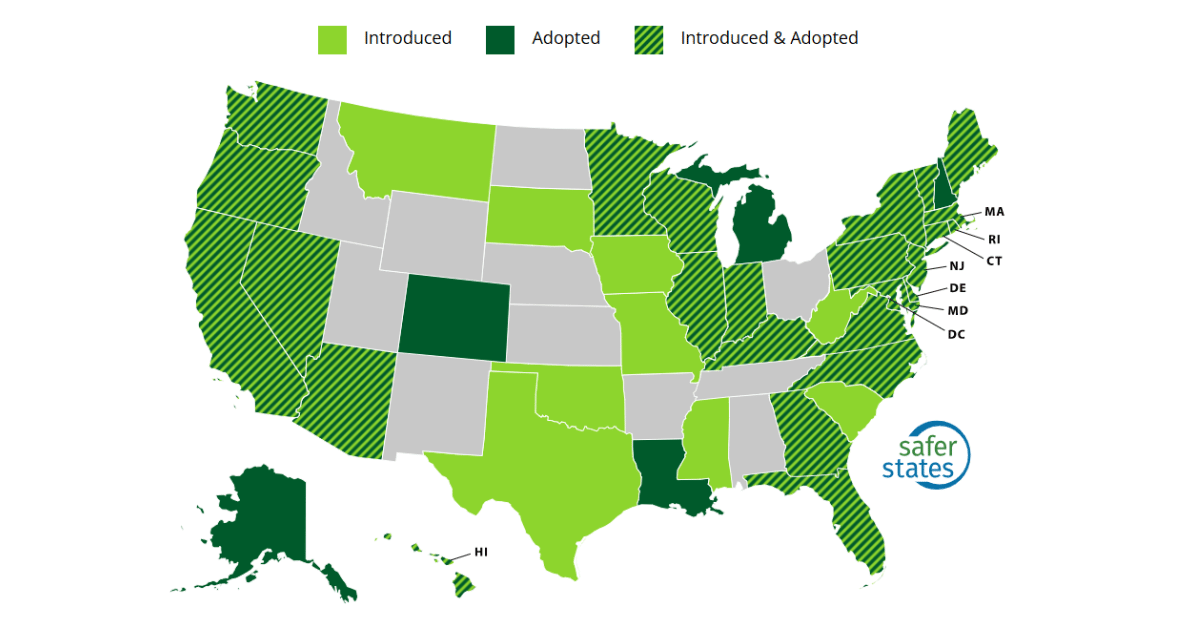
You can also view policies by state and track their status with Safer States’ interactive bill tracker. Many state-specific policies on PFAS aren’t specifically about water contamination, but rather the use of PFAS in the production of consumer products. However, eleven states have standards on the Maximum Contaminant Levels (MCLs) for PFAS in drinking water. The states with PFAS drinking water limits are:
- Maine
- Massachusetts
- Michigan
- New Hampshire
- New Jersey
- New York
- Pennsylvania
- Rhode Island
- Vermont
- Washington
- Wisconsin
Safer States also provides a map with information about state PFAS drinking water standards, which shows twelve additional states that have a guidance, health advisory, or notification level for PFAS chemicals.
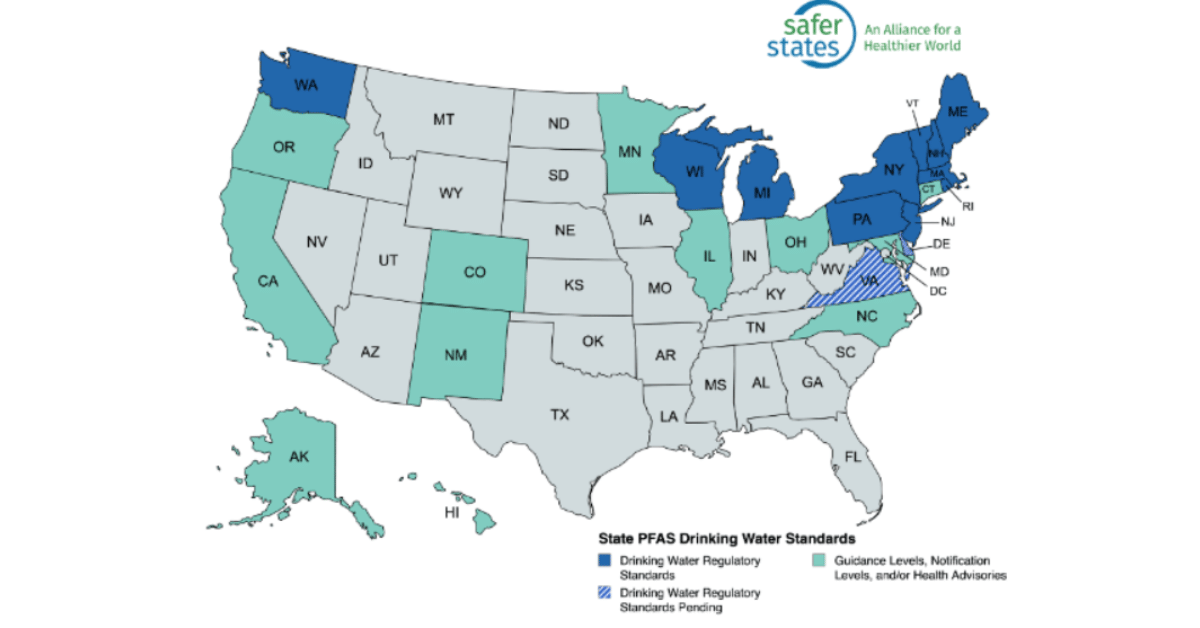
There are also ongoing efforts to increase PFAS regulation at a federal level. In April 2024, the Environmental Protection Agency (EPA) published a PFAS National Primary Drinking Water Rule (NPDWR) that sets legally enforceable MCLs for five PFAS chemicals at near-zero levels. The PFAS chemicals include: PFOA, PFOS, PFHxS, PFNA, and HFPO-DA with individual MCLs and a Hazard Index for mixtures.
To comply with the rule, public water systems must start monitoring for these chemicals by 2027 and continue monitoring to ensure compliance. Water systems are also required to provide the public with information of PFAS levels in their water by 2027, and any systems that exceed the MCLs must implement solutions to reduce PFAS.
Protect against PFAS with a water filter
While growing PFAS regulations are a step toward protecting Americans against the toxic chemicals, most states lack regulatory standards and you may find it’s worthwhile to invest in a water filter that can remove the contaminant.
When shopping for a water filter, look for systems certified by an independent third-party to NSF/ANSI Standard 53 or Standard 58 (specifically for reverse osmosis systems) for the reduction of PFAS chemicals. While these standards are in the process of being updated for the EPA’s NPDWR from April 2024, certification to the existing standards is still the best way to protect against PFAS.
At Aquasana, we offer several water filtration systems that are tested and certified to Standards 53 and 58 for the reduction of PFAS. If you’re looking for a no-install, countertop water filter, our Clean Water Machine is Water Quality Association (WQA) tested and certified to NSF 53 to reduce over 95% of PFAS. All of our under sink water filters, including the Claryum® Direct Connect, Claryum® 2-Stage, Claryum® 3-Stage, and Claryum® 3-Stage Max Flow, are all WQA tested and certified to NSF 53 to reduce over 95% of PFAS.
Additionally, Aquasana’s SmartFlow® Reverse Osmosis system removes up to 99.99% of 90 contaminants including PFOA/PFOS and is tested and certified by WQA to NSF/ANSI Standard 58 to reduce over 98% of PFAS. In addition to the exceptional filtration performance, the system also features a remineralizer to restore healthy minerals that are often lost during reverse osmosis.
Lastly, if you’re interested in filtering PFAS from every tap in your home, Aquasana’s OptimH2O® is a whole house water filtration system that is International Association Plumbing and Mechanical Officials (IAPMO) to reduce over 98% of PFAS and also protects your home from cysts, lead, chlorine, and chloramine.
Purchase a system to help protect against PFAS and improve your water quality, or contact us for more information.
UNDER SINK WATER FILTER
Claryum® 3-Stage Max Flow
Remove up to 99% of 78 contaminants, plus sediment. Now with 44% faster water flow for ultimate hydration.
